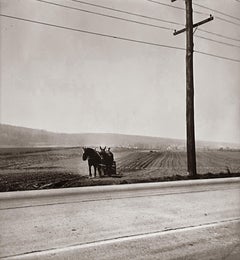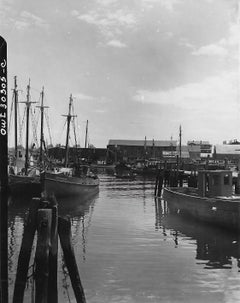Gordon Parks Landscape Photography
From the early 1940s to the 2000s, Gordon Parks chronicled the complexities of American life, revealing both its inequalities and beauty. A self-taught creator, Parks became one of the leading artists of the 20th century in his photography, filmmaking, writing and music.
Parks was born in 1912 in Fort Scott, Kansas, where his family scraped by, his father working as a tenant farmer and the children attending segregated schools. As he wrote in his 1966 autobiography Choice of Weapons, the “indignities came so often I began to accept them as normal. Yet I always fought back.” The racism and discrimination he experienced would shape his photography, in which he saw an opportunity for images to make a difference against intolerance.
Parks acquired his first camera in 1938 from a Seattle pawnshop. He was inspired by photographers such as Dorothea Lange, whose compelling depictions of the Great Depression he had seen in magazines left behind by passengers on the train where he worked as a waiter.
By 1940, Parks had his own portrait studio in Chicago, having worked his way up through gigs including photographing clothing for a local store. Awarded a Julius Rosenwald Fund fellowship, he apprenticed for the Farm Security Administration. From there he became the United States Office of War Information’s first Black photographer, a pioneering role in which he’d also found himself at magazines such as Vogue and Life. Through the 1970s, he was prolific with print publication features that covered issues like racial segregation in the South as well as fashion shoots.
In 1969, Parks made his entry into film, writing and directing the semi-autobiographical The Learning Tree, a debut that made him the first Black director of a major Hollywood movie. He followed it with the iconic blaxploitation film Shaft in 1971. A versatile innovator, Parks also composed music for projects such as the 1989 Martin ballet — a tribute to Martin Luther King Jr. — and in 1981 he exhibited his abstract oil paintings at New York’s Alex Rosenberg Gallery.
The Art Institute of Chicago, Corcoran Gallery of Art and the International Center of Photography have all presented solo shows of Parks’s photography. While he tirelessly documented the world with empathy and a critical eye for more than five decades, Parks’s rich legacy of using art as a powerful tool of change will resonate for much longer.
Find original Gordon Parks photography today on 1stDibs.
Mid-20th Century Gordon Parks Landscape Photography
Silver Gelatin
Early 20th Century Gordon Parks Landscape Photography
Silver Gelatin

